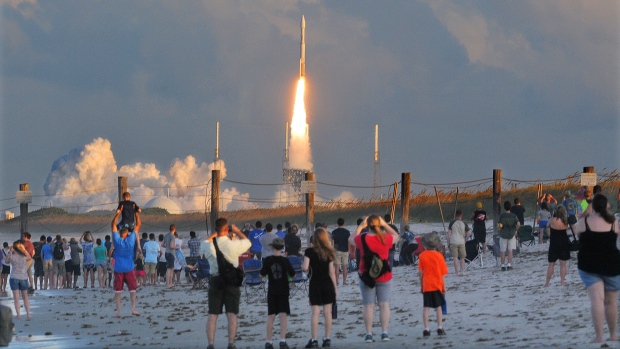-
Tips for becoming a good boxer - November 6, 2020
-
7 expert tips for making your hens night a memorable one - November 6, 2020
-
5 reasons to host your Christmas party on a cruise boat - November 6, 2020
-
What to do when you’re charged with a crime - November 6, 2020
-
Should you get one or multiple dogs? Here’s all you need to know - November 3, 2020
-
A Guide: How to Build Your Very Own Magic Mirror - February 14, 2019
-
Our Top Inspirational Baseball Stars - November 24, 2018
-
Five Tech Tools That Will Help You Turn Your Blog into a Business - November 24, 2018
-
How to Indulge on Vacation without Expanding Your Waist - November 9, 2018
-
5 Strategies for Businesses to Appeal to Today’s Increasingly Mobile-Crazed Customers - November 9, 2018
United States launches nation’s first mission to collect asteroid samples
“Tonight is a night for celebration”, said Ellen Stofan, NASA’s chief scientist.
Advertisement
Bennu, approximately 500 m wide and traveling at about 100,000 km per hour, has been selected by NASA as the target of this mission because of its primitive asteroid condition, in which the surface is covered with materials similar to those that predominated during the beginning of the solar system’s formation. It promises to be the biggest cosmic haul since the Apollo moon rocks.
The Origins, Spectral Interpretation, Resource Identification, Security-Regolith Explorer (OSIRIS-REx) spacecraft is seen in an undated NASA artist rendering.
The spacecraft is expected to reach Bennu in August 2018 and spend two years studying it before it begins the sample collection attempt in July 2020.
“We got everything just exactly flawless”, added Osiris-Rex chief scientist Dante Lauretta of the University of Arizona.
The mission has a budget of nearly $800 million, not including the $184 million sticker price of its Atlas V carrier rocket.
Only one other spacecraft, Japan’s Hayabusa, has previously returned samples from an asteroid to Earth, but it collected less than a milligramme of material because of a series of problems. The final maneuver will involve steering the spacecraft away from Earth after the sample re-entry capsule has been jettisoned and placing the spacecraft into a stable orbit around the sun.
It “is flying free on its way to a seven year mission to rendezvous with the asteroid Bennu and return a sample to Earth”.
Tim Dunn, launch manager at the NASA Kennedy Space Center, called it a “fantastic asteroid-retrieval mission” at a media briefing.
The spacecraft will not land on the asteroid, but get very close and reach out with an arm like a pogo-stick for a quick, three-to-five second maneuver.
Thousands gathered to witness the evening launch of Osiris-Rex, a robotic hunter resembling a bird.
OSIRIS-REx is the third in NASA’s New Frontiers Program, which aims to explore and understand the solar system by launching a medium-class spacecraft expedition every 36 months (on average). Thursday’s planned takeoff coincided with the 50th anniversary of the debut of the television space opera “Star Trek”.
OSIRIS-REx blazes skyward OSIRIS-REx begins its journey to Bennu following a liftoff from Cape Canaveral, Florida on September 8, 2016.
Although Bennu occupies the same approximate orbital distance from the sun, it poses little threat to Earth. But at the moment, OSIRIS-REx is under budget by at least million, according to Lauretta.
“We’re going to an asteroid that represents the first building blocks of the planets in our solar system”, said Lauretta.
Advertisement
While Osiris-Rex studies the asteroid from orbit, it will also help scientists learn how sunlight changes asteroids by heating them up and subtly changing their course.




























